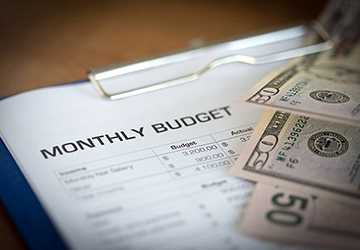6 Steps to Create an Effective Personal Budget and Save $500 Monthly
Do your expenses feel out of control? Does it seem like you always need more money left at the end of the month? You're not alone. Many of us need help managing our spending and live paycheck to paycheck without savings.
But what if we told you that you could find an extra $500 to save each month with some planning and discipline? Does that sound too good to be true? It's not!
Creating a realistic personal budget allows you to align your spending with your values and reach your financial goals.

6 Steps to Create an Effective Personal Budget
When you track your spending and create a budget, your hard-earned money will start working for you instead of trickling away on autopilot. You'll find you have savings to plan that dream vacation, make extra mortgage payments, or save for retirement.
Here are 6 Simple Steps to Start Budgeting and Save $500 Each Month:
1.Calculate Your Monthly Net Income
First, you need to know exactly how much money comes in every month after taxes and other deductions—Tally up net income from your job, side hustles, investment returns, and any other sources.
For most budget beginners, using take-home pay is the most straightforward route.
List Regular Monthly Expenses
Make a comprehensive list of predictable expenses every month:
● Housing costs - rent/mortgage, property tax, insurance
● Debt payments - student loans, car loans, credit cards
● Utilities - electricity, water, internet, cell phone
● Insurance - health, dental, vision, life
● Transportation - gas, car maintenance, public transit
● Food - groceries, eating out
● Family expenses - childcare, allowance for kids
● Membership - gym, Netflix, Spotify
● Donations
Having all regular expenses visible in one place highlights spending patterns and ensures important bills aren't accidentally overlooked.
3.Identify Top Spending Categories
Break down the last 3-6 months of bank and credit card statements to reveal your most significant spending categories. Common top categories include dining out, entertainment, shopping, travel, groceries, self-care, and cash withdrawals.
Seeing where most of your money flows monthly helps you to pinpoint areas to cut back. After housing expenses are often fixed, food and entertainment are typically the biggest drains on cash flow for individuals.

4.Give Every Dollar a Purpose
Budgets fail when there are more months than money at the end because expenses outpace earnings. Zero-based budgeting fixes this by assigning jobs to every dollar coming in so nothing is left wondering where it went.
Add up all regular monthly expenses, from housing to debt payments. Then, allocate dollars from your monthly net income into budget categories until you reach your total earnings amount. If expenses exceed earnings, you must cut back category budgets.
Ideally, 5-10% of your income should go straight to savings as the top priority. The rest can be divided into fixed living expenses and discretionary categories like dining out and entertainment.
Apps like Mint, You Need A Budget (YNAB), EveryDollar, and Personal Capital make tracking budgets by category seamless. Or you can DIY with a simple spreadsheet.
5.Get Your Family Involved
If you're part of a household, make sure to include all decision-makers—your spouse, kids, and roommates—in the initial budgeting process. Agree on financial priorities for savings goals, debt reduction, and discretionary spending.
Giving kids clothing and activity allowances within the master family budget teaches them money management skills. Having everyone on the same page about where money should be allocated avoids future conflicts over perceived overspending in any one category.
6.Reassess and Refine Monthly
Check your budget periodically, especially at the end of the month, when you have the complete picture of how well you stuck to planned spending by category. Celebrate successes in resisting impulse purchases that derail budgets.
For categories where you consistently go over budget, dig into the specifics of what, when, how, and why you overspend. Adjust your budget numbers to better match reality while still allowing some savings. Avoiding strict budgets is almost impossible to follow for a long time.
Building some flexibility makes your budget more sustainable over months instead of abandoning rigid budgets that leave no room for realistic spending changes from month to month. But have an accountability system, whether that's a budgeting app or spreadsheet that tracks every dollar coming in and going out.
Take Control of Your Finances Starting Today
We've given you a clear blueprint for creating a bulletproof personal budget that works. Now, it's up to you to put these steps into practice.
We know it takes some effort to stick to a spending plan when it would be easier to pretend everything is fine financially and continue overspending.
But you can take control of your money situation right now instead of living in fear of surprise expenses that will further sink you into debt.
If having an extra $500 of savings monthly sounds good, start budgeting - your future self with thank you down the road!











